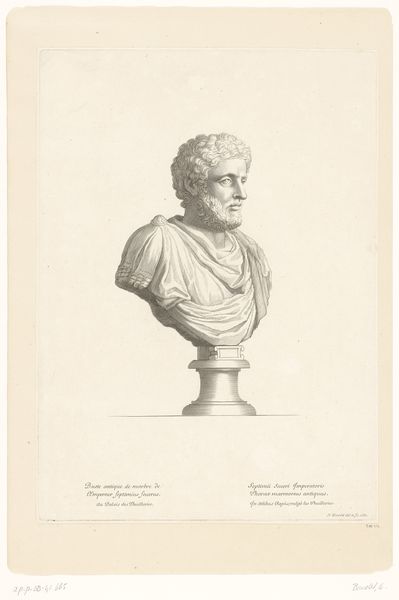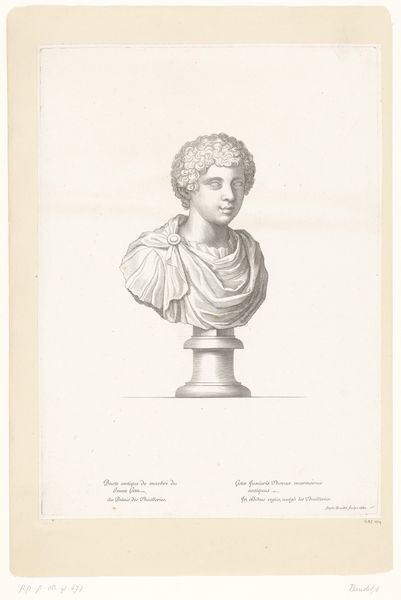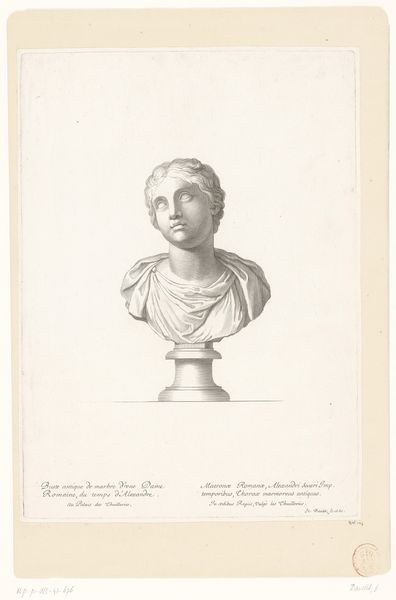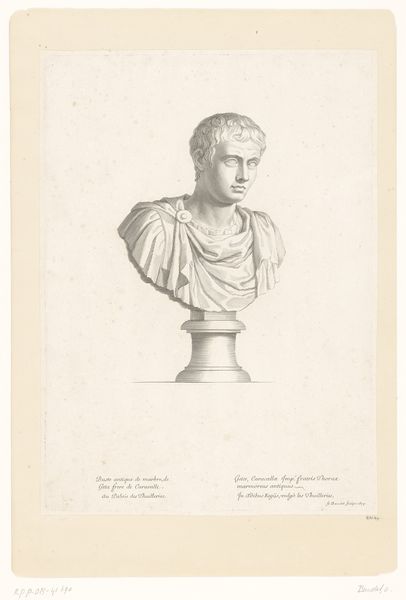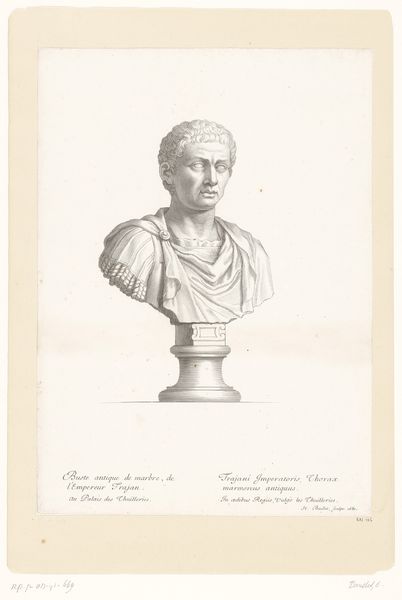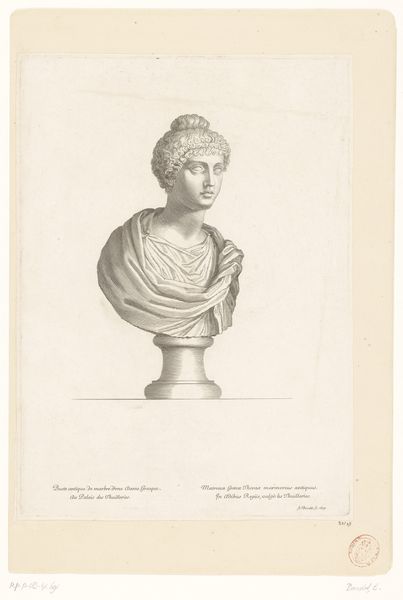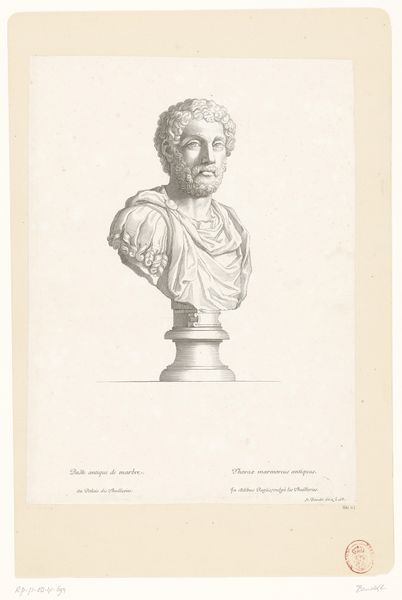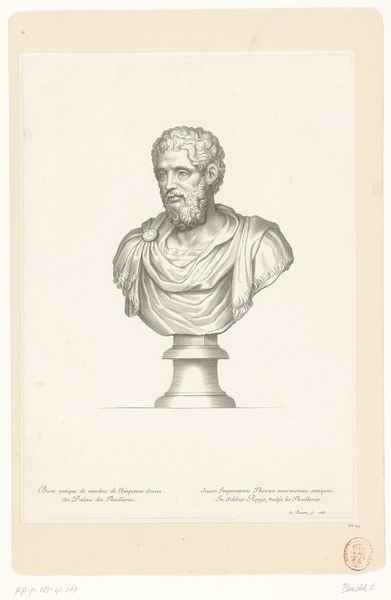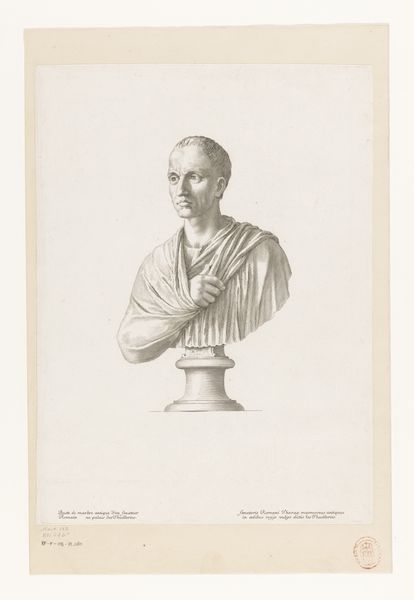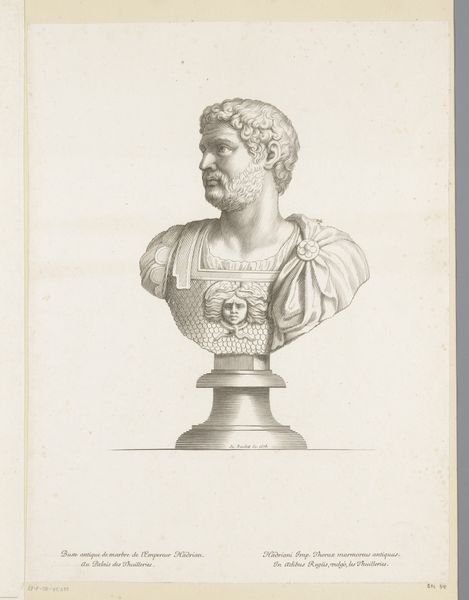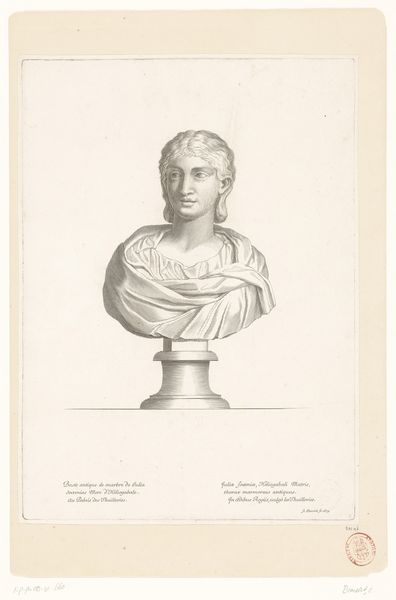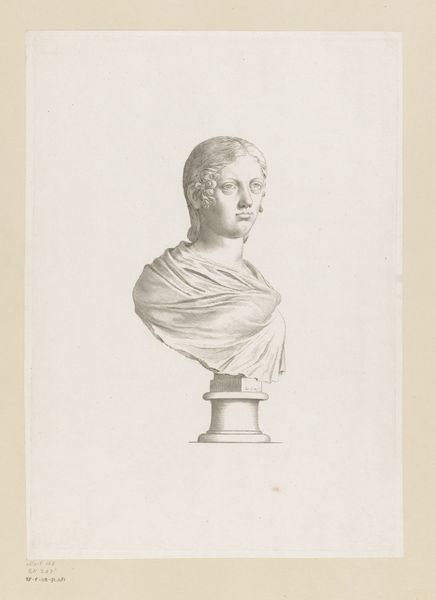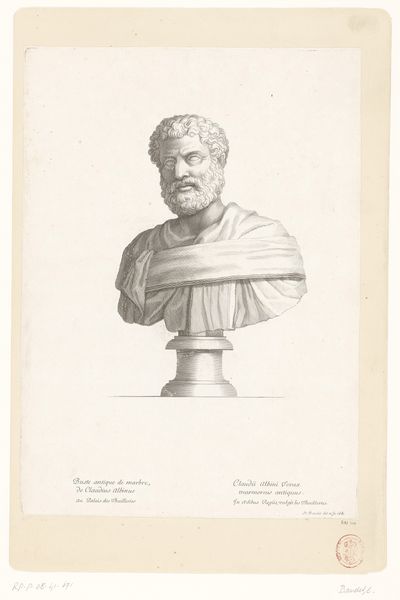
Dimensions: height 391 mm, width 278 mm
Copyright: Rijks Museum: Open Domain
Etienne Baudet made this print of an antique bust of Lucius Iulius Caesar Vipsanianus sometime between 1638 and 1711. It reflects a moment in European history where the rediscovery of classical antiquity deeply influenced art, politics, and identity. Lucius, a member of the Roman imperial family, was positioned as a future leader, embodying the power and prestige of the Roman Empire. In Baudet’s era, representing figures like Lucius wasn't just about art, it was about connecting to an idealized past to legitimize contemporary power structures. The creation and circulation of this image speak to the interwoven themes of power, legacy, and representation. Prints like these helped shape how people saw themselves in relation to history and authority. There's a tension inherent in idealizing figures from the past, especially when we consider the social and political realities of the Roman Empire. Ultimately, this print invites us to reflect on how historical figures are used to construct identity, and how the stories we tell about the past inform our present.
Comments
No comments
Be the first to comment and join the conversation on the ultimate creative platform.
